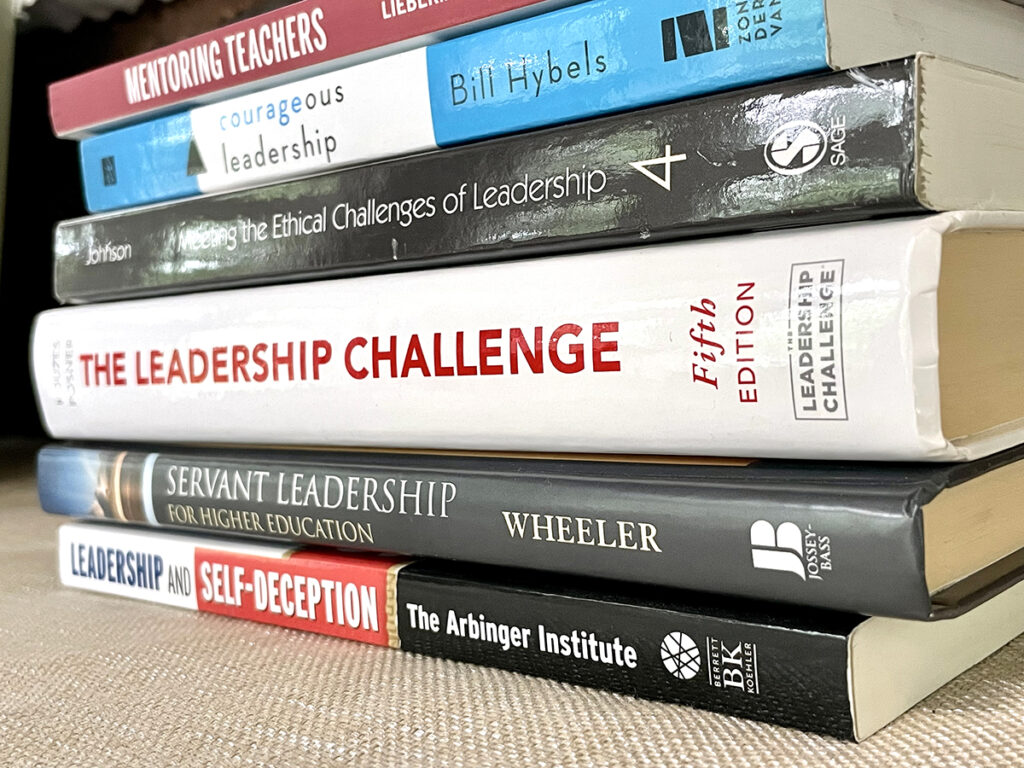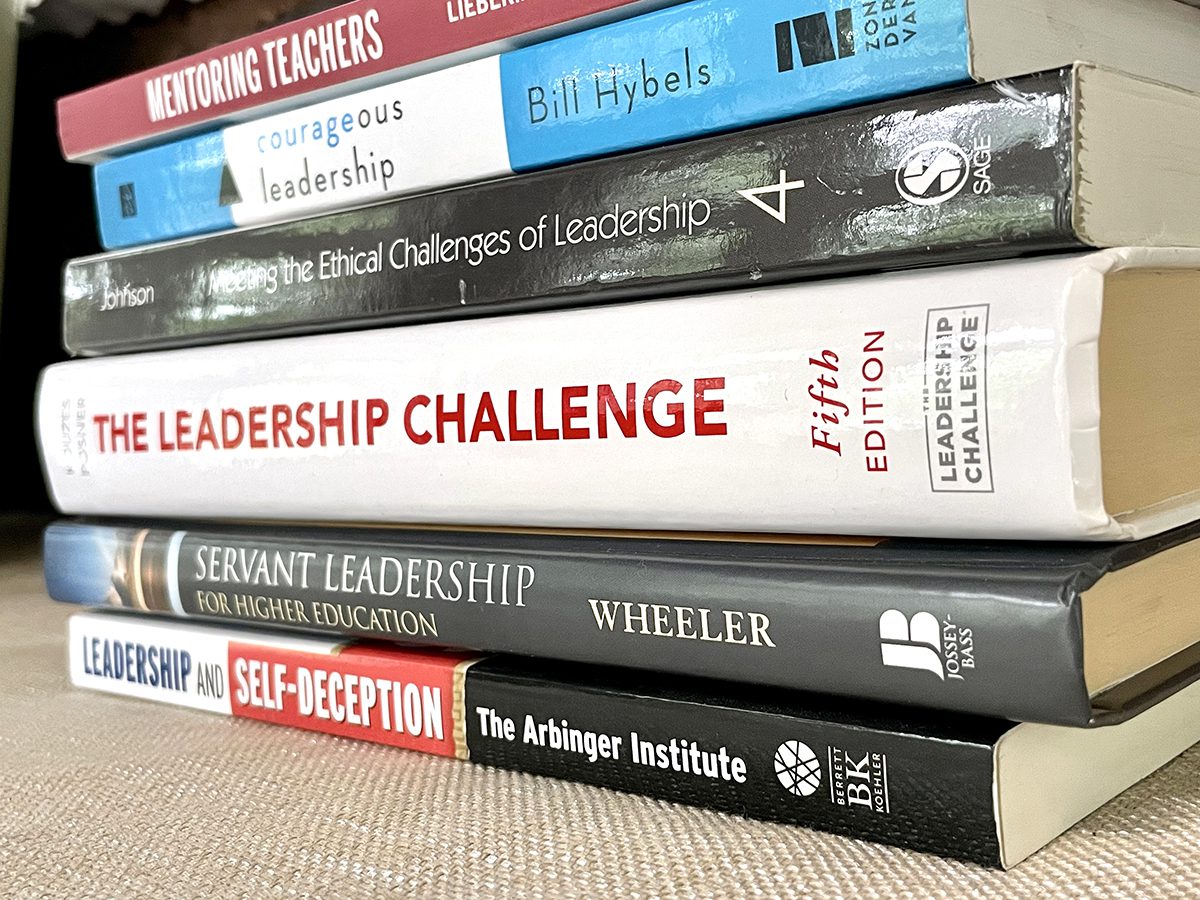As a teacher, you are a leader in your classroom. You lead your students to learn art techniques, mediums, artists, movements, and processes. You are passionate about your students’ growth and potential as humans and as artists. Erin Saladino, AOEU’s Learning Experience Designer has 17+ years of experience as a visual art and theatre teacher and county art supervisor. She describes teachers as lifetime cheerleaders! She challenges you to cheerlead yourself and consider how can you push yourself to take your role as an art teacher one step further.
Teaching is exhausting. You pour everything into your students, art room, and curriculum. It can be hard to even think about leading other art teachers when you can barely keep pace on your own. But, this is exactly why you need to take the next step. When you lead others, no matter how small your contribution, you will feel reenergized, respected, and supported. It will help immensely to make your career of teaching art sustainable.
So where do you start?
Let’s take a closer look at what leadership means and then explore six ways to grow as an art teacher leader.

What is leadership?
Erin shares a non-intimidating definition of leadership. She defines leadership as “collaboration and guidance.” These are two things you excel at as an artist and art teacher. You have a knack for looking at large groups of students and figuring out what they need. Why not apply those same skills to adults? Look at a large group of art teachers and figure out what they need. Work with other art teacher friends to figure out solutions and share those with the wider community.
If you are fascinated by leadership within art education circles and the trickle-down impact you can make on students everywhere, we invite you to learn more about our new Master of Education in Curriculum and Instruction (MEd). Within this flexible online degree program, you will be able to specialize in Instructional Leadership in Art Education. Step into your leadership potential by making small-scale changes in your social and professional circles. Talk to an admissions counselor today to learn more.
Get in touch with an admissions counselor!
Here are six small steps to tap into your leadership potential as an art teacher.
1. Reflect on what you are already good at.
You may be feeling apprehensive. Perhaps you are new to teaching art! Or maybe you don’t think you have anything worth sharing! It doesn’t matter how many (or how few) years you have under your belt. Instead of correlating years of experience with worth, try to take each person for what they can offer. We can all learn from each other.
If you are feeling stuck and don’t think you have anything new or innovative to offer other art teachers, consider areas in which you already excel. It can be something small that you think is insignificant, such as how you color-code your room or a catchy call and response system you developed that your students love. Erin says to ask yourself, “What makes you sparkle?” Someone else out there may be struggling in your area of expertise.

2. Share on your own platform.
Once you have that one little thing you do well, that makes you “sparkle,” it’s time to share it! Art teachers and artists are lifelong learners—constantly revising and improving. If you want to be the best art teacher you can be for your students, you need to grow. Erin reflects, “Our students don’t get anything if we don’t grow as educators.”
Sharing doesn’t have to be a huge, intimidating feat. Start simple with writing something out and sharing it on social media. You can share on your personal platform or create a professional account. You can share in art teacher groups for a slightly larger reach. This is a great way to build your confidence.

3. Share with other teacher friends.
Still anxious to share your tips of the trade with others? It can be nerve-wracking to present in front of your peers! Once again, take the pressure off and start low risk. Collaborate with other art teachers. If you are “on an island” and are the only art teacher in your school or district, find another art teacher to connect with in a neighboring school or district. Grab a bunch of local art teachers and put them in an email thread or start a group chat.
There is power and encouragement in numbers (even just two!). Find a buddy or crew to bounce ideas off of and cheer each other through tough days. You will gain confidence, and you will be stretched. Collaborating with others keeps you from becoming stagnant and doing the same things over and over and over again. Keep an open mind—collaboration can be beneficial with teachers in other content or specialization areas too!
4. Share with your immediate colleagues.
When you are feeling more courageous, take another small step forward in leadership! Actively participate in your school’s staff meetings. Oftentimes, art teachers sit in the back, and as a result, others assume we don’t know as much about teaching as core content teachers. That couldn’t be further from the truth! Art teachers have the advantage of knowing the majority of the students, teachers, and curriculums in the building, especially at the elementary level. As part of our cross-curriculum goals and social-emotional connections with students, art teachers collaborate and connect on many levels. Monopolize your knowledge and be the “know it all” during your next staff meeting.
Think about other areas or events you must attend and how you can use them as opportunities to take small steps in leadership. Does your school have professional learning communities or networks? How can you share at the next one? Does your district have a back-to-school or quarterly county-wide art professional development day? Can you do a quick presentation at the next one with your art teacher buddy or crew?

5. Share on wider platforms.
If you have made it this far in the list, pat yourself on the back. It’s an empowering feeling to know you are putting new ideas out in the field of art education and impacting teachers and students. It’s time to share your expertise on larger platforms for a wider influence.
Here are some places you can increase your reach:
- Present at the next NOW Conference.
- Join the AOEU Writing Team and contribute to our Magazine.
- Apply to be a Video Content Creator for AOEU’s YouTube channel.
- Host a training or workshop at your school or district.
- Lead a session at a state or national conference.
- Upload your best lesson plan on a lesson-sharing hub.
- Create a deliverable or product and list it on Teachers Pay Teachers.
- Give a TED talk.
- Start a podcast or contact your favorite podcast to be a guest speaker.
6. Apply to be a team leader.
If you are loving the impact you are making in art teachers’ lives, consider taking on an “official” leadership role. Apply for a position such as a team leader, content area leader, department chair, or learning coach. You can also explore positions like being a mentor teacher to preservice art teachers or high school interns. As your confidence builds, you may notice your other strength areas and how they can impact the world of education as a whole.
There are so many ways you can step up and be an art teacher leader in your circles of influence. Start small by thinking about what makes you “sparkle.” Share what you are already good at with a fellow art teacher and then branch out from there! Be an active participant in your next staff meeting, present at a conference, or write for our online Magazine. Before you know it, you will be applying for leadership roles and opportunities on a larger scale. No matter where you are in your leadership journey, document everything you do. Not only is it a way to track your own leadership growth, but it can also earn you professional development points at your end-of-year evaluations.
What is one small next step you can take to step into your leadership potential?
Take a moment to identify the one thing you are good at that makes you “sparkle.”
Magazine articles and podcasts are opinions of professional education contributors and do not necessarily represent the position of the Art of Education University (AOEU) or its academic offerings. Contributors use terms in the way they are most often talked about in the scope of their educational experiences.





